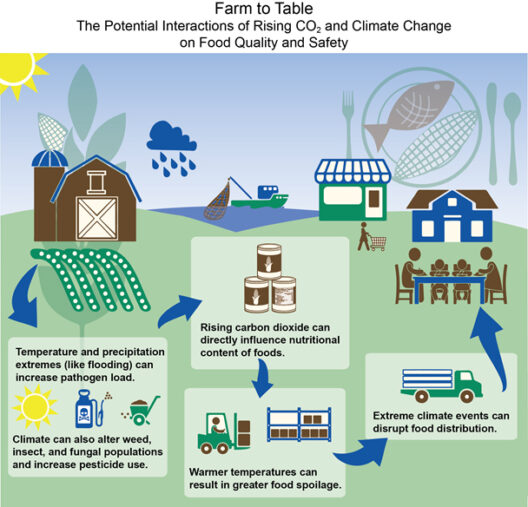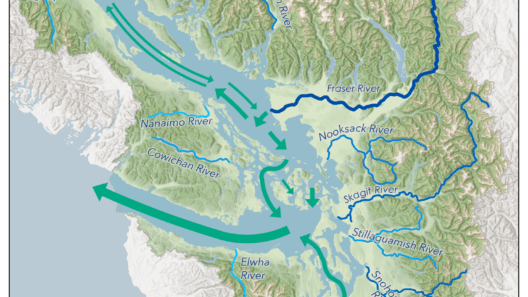Water, often referred to as the “universal solvent,” plays an indispensable role in maintaining the delicate equilibrium of Earth’s climate. Imagine a world without this liquid ally—how drastically different would our environment be? Water not only sustains life but acts as a crucial regulator of our planet’s temperature. This intrinsic relationship between water and climate is both fascinating and complex. However, as climate change escalates, the challenge presented by shifting water patterns becomes ever more critical. How can we ensure that this vital resource continues to function as a moderator in the face of anthropogenic pressures?
The unique properties of water contribute significantly to its role in temperature regulation. Water has a high specific heat capacity—meaning it can absorb a large amount of heat without experiencing a significant rise in temperature. This characteristic allows oceans, lakes, and rivers to buffer the temperature changes that would otherwise create an inhospitable climate. When sunlight strikes the surface of water bodies, a significant portion of this energy is absorbed rather than reflected or transformed into heat. Consequently, regions adjacent to large water bodies exhibit more moderate temperatures compared to those in the interior of continents. Think of cities like San Francisco, where oceanic winds temper the sweltering summer heat, creating a microclimate that supports diverse ecosystems.
Furthermore, water’s ability to circulate on a global scale plays a pivotal role in distributing heat across the planet. Oceanic currents, driven by wind patterns and Earth’s rotation, transport warm and cold water, which influences climatic conditions far removed from their origin. For instance, the Gulf Stream carries warm water from the Gulf of Mexico into the North Atlantic, significantly impacting the climate of Northern Europe. Without these currents, regions that currently experience temperate weather would likely endure frigid conditions year-round. Therefore, understanding these currents and their intricate behaviors is critical for predicting climate changes and preparing for the consequences.
In addition to moderating temperature, water is integral to the water cycle, which encompasses evaporation, condensation, and precipitation. During the evaporation process, heat is absorbed from the environment, resulting in a cooling effect—imagine the refreshing breeze that accompanies a hot day near a body of water. Conversely, condensation releases heat into the atmosphere, contributing to the warming of the air surrounding clouds. This dual role of water—both as a coolant and a heater—ensures that temperature fluctuations are gradually tempered, thus protecting ecosystems and preventing abrupt climatic shifts.
However, the balance is precarious. Climate change, largely driven by human activities such as fossil fuel combustion and deforestation, threatens to disrupt this delicate equilibrium. As global temperatures rise, water bodies warm, which in turn affects evaporation rates, altering precipitation patterns. Some regions may experience increased rainfall, leading to floods, while others could face devastating droughts. Herein lies the challenge: how can we adapt to and mitigate these changes while ensuring our essential liquid ally continues to regulate Earth’s temperature? The unpredictable behavior of water in this context signifies a pressing issue for policymakers, scientists, and the general public.
Moreover, the rising temperatures contribute to the phenomenon of glacial melt, which injects fresh water into oceans, disrupting salinity and, consequently, ocean currents. The repercussions of such changes extend far beyond coastal regions. A shift in ocean current patterns can lead to altered weather systems, impacting agriculture, biodiversity, and human livelihoods across the globe. The interconnectivity of climate systems underscores the need for a comprehensive understanding and collaborative efforts to study and address these issues.
Additionally, maintaining the health of wetlands and freshwater systems is vital for preserving this liquid ally as a regulator of temperature. Wetlands act as natural buffers, absorbing excess water during heavy rains and releasing it gradually during dry spells. They also sequester carbon, helping to mitigate the impacts of climate change. Unfortunately, habitat destruction and pollution threaten many of these ecosystems, diminishing their capacity to function effectively. Can we rise to the challenge of protecting these invaluable resources before it’s too late?
Public awareness and engagement are integral in addressing these challenges. Individuals can contribute by conserving water, supporting sustainable agricultural practices, and advocating for policies that prioritize the health of our water systems. Climate education initiatives can empower communities to better understand the importance of water in regulating temperature and sustaining ecosystems. This knowledge can drive collective action to protect our planet’s most precious resource.
As we ponder this complex interplay between water and climate, we are reminded of water’s unparalleled importance in the continuation of life on Earth. The cavalry must wear many hats: policy reformers, scientists, conservationists, and everyday citizens, all uniting to ensure that water retains its role as our climate’s liquid ally. The playful question remains—how can we leverage our collective strengths to overcome the formidable challenges posed by climate change? Embracing innovation, protecting natural resources, and fostering global cooperation could illuminate the path forward. By understanding and respecting the fundamental role of water in our climate system, we may pave the way for a more sustainable future.







